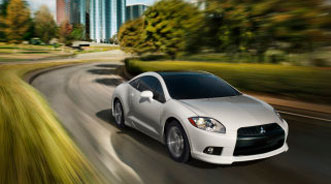Will Mitsubishi Stop Building U.S.-Only Models?

TOKYO -
In reviewing Mitsubishi’s global business plan for fiscal years 2011 through 2013, Auto Remarketing learned the end might be near for the automaker to continue building region-specific models, including U.S.-only models. Instead Mitsubishi looks poised to take on a more global approach with its product platforms.
The automaker’s production hub in the U.S. will be used to build a new vehicle to be sold domestically and abroad, Mitsubishi noted.
In its “Jump 2013” mid-term business plan, the automaker said it will stop building “region-specific” models and instead conduct globally focused production. The plan also calls for tapping into emerging markets, bolstering its environmental efforts and adjusting costs.
“The new plan reflects the immense change in automobile industry demand structure caused by worldwide economic turmoil,” the automaker said in a statement. “By focusing business resources on increasingly important areas such as fast-growing, emerging markets and on environmental initiatives, and by reforming cost structure, Jump 2013 aims for ‘growth and a leap forward.’”
Mitsubishi plans to unveil eight new vehicles that are either electric models or plug-in hybrids by 2015 and said that hybrids would be launched in 2013.
“In parallel, MMC will keep its business resources focused on globally strategic models such as compact cars and SUVs, for which high demand is expected, especially in emerging markets,” officials stated.
“Both development process and product range will be streamlined by discontinuing region-specific model production,” they added.
While also delving into its production plans for emerging markets, Mitsubishi said it will tweak its U.S, European and Japanese production hubs’ respective capacities.
Specifically, Mitsubishi said it will not replace the Colt in its European production plans, and indicated that its mini-car joint venture with Nissan in Japan is on track.
“The U.S. hub will introduce a new model for both domestic and export sale,” officials said.
Jump 2013 also includes the “Mitsubishi Motors Environment Initiative Program 2015” that outlines the company’s course on the environmental front now from 2011 through 2015.
Basically, it continues what was started in the “Environment Program 2010” and is comprised by “interim targets” as the company strives to meet its 2020 environmental goals.
For example, the company hopes to cut carbon-dioxide emissions from its new product by 25 percent by 2015 and 50 percent by 2020.
It hopes to achieve at least a 5 percent EV/PHEV production ratio by 2015 and at least a 20 percent ratio by 2020. Furthermore, Mitsubishi aims to slice carbon-dioxide emissions from production by 15 percent by 2015 and 20 percent by 2020.
Continuing on, Mitsubishi also shared some of its financial goals for the next few years.
It hopes to cut materials costs in 2013 by 90 million yen compared to the 2010 forecast, and will achieve this through strategies like “counteraction of yen appreciation by expansion of overseas procurement.”
Officials noted: “While the business environment is undergoing such substantial changes, MMC will make fundamental reforms in cost structure via a Cost Reduction Implementation Committee under the direction of the president.”
They added: “Together with global production expansion, MMC will also enhance efforts to sustain worldwide Mitsubishi brand quality level.
“Alongside the ongoing business alliance with PSA Peugeot Citroën, MMC has expanded its business cooperation with Nissan,” officials continued. “MMC will act decisively to form alliances with potential business partners in individual project areas with foreseeable merits, to increase opportunities and strengthen profitability.”
By undertaking these measures, Mitsubishi aims to hit 2.5 trillion yen in sales during fiscal-year 2013, which would be up from 1.9 trillion yen in the 2010 forecast. The automaker said its goal is to generate 90 billion yen in operating income, compared to the 2010 forecast of 45 billion.
The goal for 2013 net income is 45 billion yen, versus 15 billion.
Mitsubishi is aiming to sell 280,000 more retail units in emerging markets during fiscal 2013 than the 2010 forecast. The automaker expects retail sales in mature markets will be lifted by the inclusion of compact cars and eco-cars and climb by 90,000 units.

 View The Latest Edition
View The Latest Edition

